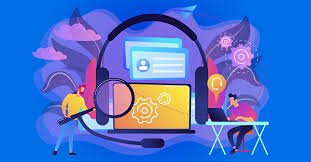🔍 Defining Customer Self-Service (CSS)
Customer Self-Service (CSS) refers to a suite of digital solutions enabling customers to independently access information, resolve inquiries, and perform standard transactions—without direct interaction with company personnel. By empowering customers to take control of their journey, organizations can simultaneously enhance customer satisfaction and streamline operational costs.
🌐 Core Self-Service Channels
Organizations are increasingly adopting self-service infrastructure to meet rising customer expectations and scale support cost-effectively. The key delivery mechanisms include:
- Knowledge Bases & Help Centers
Centralized repositories containing FAQs, how-to articles, and troubleshooting guides that support quick issue resolution. - Customer Portals
Secure, personalized interfaces where users can manage accounts, monitor transactions, or update personal information. - AI-Powered Chatbots and Virtual Assistants
Intelligent systems that provide instant responses to common queries, improving responsiveness and reducing support latency. - Community Forums
Peer-to-peer networks enabling users to exchange insights, resolve challenges collaboratively, and build brand advocacy.
Collectively, these tools reduce customer effort, accelerate time-to-resolution, and foster brand loyalty.
✅ Business Case: Benefits of Customer Self-Service
Adopting a customer self-service strategy yields multifaceted benefits, both operational and experiential:
- Cost Optimization
Reduces reliance on live agents, enabling cost-efficient scalability without compromising service quality. - 24/7 Customer Access
Provides consistent, uninterrupted support—enhancing satisfaction across time zones and customer segments. - Elevated Customer Experience
Empowers users with autonomy and convenience, reinforcing trust and long-term engagement. - Operational Agility
Frees internal resources to focus on high-value, complex issues—boosting team productivity and service differentiation. - Scalability
Easily accommodates increased demand, particularly during growth phases or peak periods, without proportionate headcount expansion.
🛠️ Roadmap to Effective CSS Implementation
To extract maximum value from self-service technologies, organizations must adopt a structured and customer-centric approach:
- Develop Robust Knowledge Assets
Ensure help centers are enriched with accurate, relevant, and frequently updated content. - Integrate AI and Intelligent Automation
Deploy advanced chatbots and automated workflows to resolve routine tasks and inquiries at scale. - Design Personalized Customer Portals
Tailor interfaces to reflect individual user preferences, usage patterns, and transaction histories. - Cultivate Community Ecosystems
Encourage user participation in forums to drive peer-to-peer learning and reduce support overhead. - Establish a Continuous Improvement Loop
Regularly evaluate self-service performance metrics and iterate based on user feedback and behavioral analytics.
📘 Recommended Resources
To explore further strategic perspectives on customer self-service, consult the following:
- TechTarget: What is Customer Self-Service?
- Salesforce: What Is Customer Self-Service?
- Knowmax: Customer Self-Service Software for Enhanced CX
Customer self-service is no longer a competitive advantage—it is a strategic imperative. Enterprises that invest in thoughtful, well-executed self-service ecosystems will not only reduce cost-to-serve but also elevate customer satisfaction and loyalty—critical differentiators in today’s experience-driven economy.

